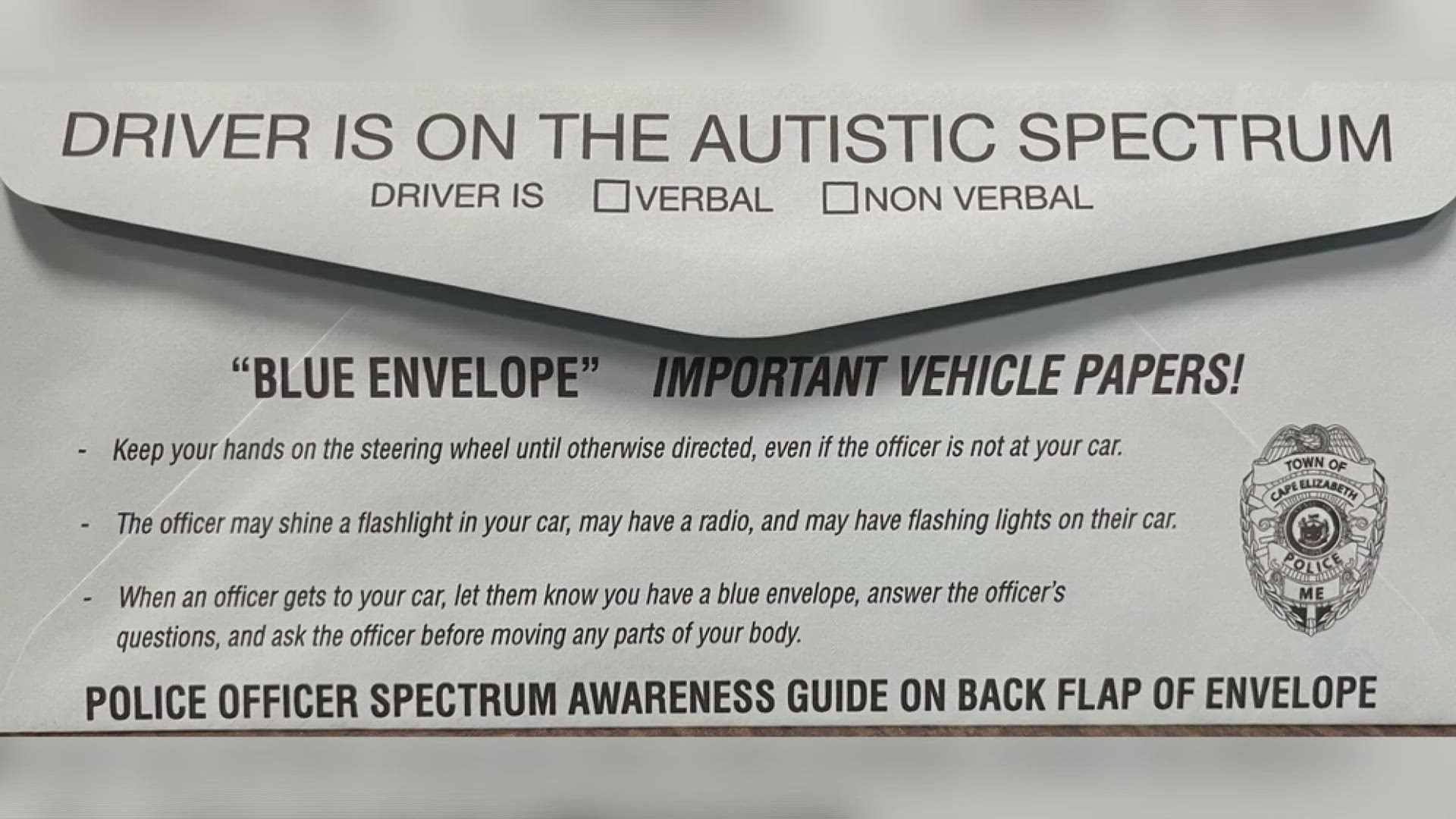CAPE ELIZABETH, Maine — The Cape Elizabeth Police Department (CEPD) has added a new program to help make traffic stops less stressful for drivers with autism.
When Sergeant Kevin Kennedy heard about the Blue Envelope Program being used in his home state of New Jersey, he thought it would be invaluable to bring the practice to Maine.
"I thought, what a great idea!" Kennedy said.
The Blue Envelope Program started in Connecticut in 2020 and has since been adopted by police departments in New Jersey, California, and New York to name a few.
Kennedy said he started researching the program to see if it was available in Maine.
After a Google search and a chat with the Autism Society of Maine, Kennedy said it looked as though Maine was not a participant. It was then and there he decided to talk with Cape Police Chief Paul Fenton, who agreed the program would make a great addition to the community.
“In Maine, and at CEPD, we go through training on how to work with people who have a diagnosis. We never want a negative incident to happen," Kennedy said. "Although designed for motor vehicle stops, the blue envelope can also be helpful in cases of motor vehicle accidents or mechanical breakdowns," he said.
RELATED: Free online training helps kids with ADHD and autism spectrum disorder improve executive functioning
How does the program work?
Drivers can pick up an envelope at the Cape Elizabeth Police Department at 325 Ocean House Road. Next, drivers should place important documents in the blue envelope including a copy of their driver’s license, vehicle registration, current insurance card, and a list of emergency contacts. Then, if you are pulled over, all of your documents are in one place, with an explanation of your diagnosis.
What's on the envelope?
The front of the envelope features helpful information for police officers when conducting a traffic stop.
Police Officer Instructions
- Driver may exhibit signs of anxiety due to bright lights and noises like your radio.
- Driver may display repetitive body movements of fidgeting and may have unusual eye contact.
- Speak clearly and use the most simplistic explanations possible. Limit unnecessary details.
- Allow driver extra time to respond, driver may need more time to formulate a response.
- Clearly tell the driver when the stop is over and they can leave.
- If the driver becomes upset, consider contacting the person listed on the contact card.
On the back of the envelope, the driver can check a box conveying if they are verbal or nonverbal, along with instructions for the driver to follow.
Driver instructions
- Keep your hands on the steering wheel until otherwise directed, even if the officer is not at your car.
- The officer may shine a flashlight in your car, may have a radio, and may have flashing lights on their car.
- When an officer gets to your car, let them know you have a blue envelope, answer the officer’s questions, and ask the officer before moving any parts of your body.
RELATED: Driver safety week for teens is upon us: highway safety experts say review the rules of the road
The sergeant acknowledged there have been incidents in this country where a traffic stop involving a person with autism has gone wrong. Kennedy said he encourages other police departments to consider adding the Blue Envelope Program to help prevent potentially tragic outcomes.
Kennedy said anyone who does not live in Cape Elizabeth is more than welcome to contact the PD for an envelope. He said this program is not limited to one diagnosis, but also to those with PTSD, or severe anxiety.
"Most people have very few police interactions in their lives, if any. If anyone with a diagnosis has a police interaction from a traffic incident, we want it to be positive for both the driver and the officer," Kennedy said.

